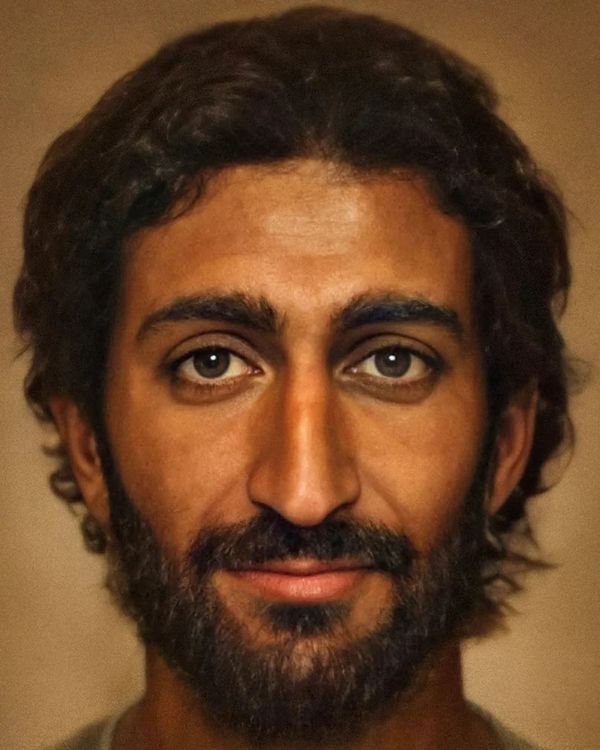
For centuries, the Catholic Church has portrayed Jesus Christ as a fair-skinned European with captivating blue eyes. However, scholars now suggest that the actual appearance of Jesus may be quite different from the artistic representations of the Renaissance era.
Bas Uterwijk, a talented Dutch photographer and digital artist, embarked on a quest to uncover the true face of Jesus. Armed with state-of-the-art technology, Bas utilized Artbreeder’s powerful machine-learning techniques to create an image that closely resembled the historical context of Jesus’ birthplace.
The image that emerged from Bas’ efforts defied our preconceived notions of Jesus’ appearance. Bas explains, “The AI software leverages a neural network trained on various photographic portraits and painted renditions of human faces.” This innovative approach allowed Bas to combine multiple facial references and produce an image that respected the user’s aesthetic preferences. In doing so, he aimed to breathe life into both real and imaginary personalities.
“I sought to refine Jesus’ ethnicity, crafting a Middle-Eastern visage that evoked authenticity by drawing inspiration from artistic portrayals rooted in Byzantine and Renaissance traditions,” says Bas, referring to iconic works such as Leonardo da Vinci’s ‘Salvator Mundi’ and the mysterious Turin Shroud.
Despite Bas’ satisfaction with the collective cultural depiction achieved, he desired greater historical accuracy. “I meticulously adjusted the hair and beard lengths and styles to reflect the norms of that time and region,” he elaborates. Bas incorporated elements from Fayum mummy portraits, pushing the boundaries of Renaissance aesthetics.
The result of Bas’ efforts is not a scientifically precise representation but rather an aesthetic impression of what Jesus might have looked like. Born into a Jewish family in Bethlehem in 4 BC, Jesus spent his formative years there before settling in Nazareth, a town in Israel.
According to Joan Taylor, author of “What Did Jesus Look Like,” historical documents indicate that the people of Judea and Egypt had olive-toned skin, ebony-black hair, and brown eyes. Regardless of one’s preconceived image of Jesus, his appearance has permeated civilizations worldwide, leading to universal recognition that often bypasses further examination.
“However, the iconic features we associate with Jesus—flowing hair, robes, and beards—date back to the 4th or 5th centuries,” notes Taylor. In reality, Jesus’ appearance diverged significantly from these depictions. “He wasn’t fair-skinned, and Europe wasn’t his home. He was a product of his time, deeply ingrained in his geographical and historical surroundings.”
Joan Taylor adds, “His complexion would have been darker, accompanied by short, raven-black hair—long hair was actually uncommon during the first century.” Jesus would have also sported a beard and footwear in the form of traditional sandals. Taylor, an expert in the origins of Christianity, emphasizes that Jesus led an itinerant existence without a permanent home, relying on the generosity of others and sharing the struggles of the less fortunate.
Historical records, including those of the 2nd-century scholar Celsus, support this depiction of Jesus as a humble figure—a wanderer with an unkempt appearance, resembling a beggar. As Jesus himself said, “Foxes have dens, and birds have nests, but the Son of Man has nowhere to lay his head.” This aligns with the most profound understanding of Jesus’ existence.

Surprisingly, Jesus’ impact extended far beyond his immediate surroundings, reaching people across Europe and Africa. Richard Neave, a forensic facial reconstruction specialist, was tasked with visualizing the likeness of a first-century Judean man comparable to Jesus. Neave’s meticulous restoration showcases a robust individual with dusky skin, short hair, and an olive complexion.
As this project reveals new insights into the multifaceted nature of Jesus’ appearance, we encourage you to share this post with your friends and family on Facebook. Let us spark meaningful debates about the historical nuances of this iconic figure whom we hold dear.






